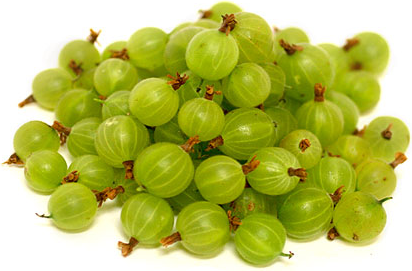Gooseberries
- The Rainbow Team
- May 16, 2015
- 1 min read

Seasons/Availability
Gooseberries are available year round.
Current Facts
The Gooseberry, botanical name, Ribes uva-crispa and syn. Ribes grossularia, is a species of the Ribes genus. Ribes is a genus of about 150 species of flowering plants, including Gooseberries' closest botanical relative, the currant. There are hundreds of varieties of gooseberries, of which the most common are Old Rough Red and Hairy Amber.
Description/Taste
Gooseberries come in many textural finishes: smooth, fuzzy, spiny, opaque and translucent, always with a taut skin and tomato-like flesh. The Green gooseberry differs from the Cape gooseberry with one major distinction - it does not contain a husk. With Green gooseberries, sizes and flavor may vary: they may be as big as a cherry tomato or as tiny as a blueberry. They may also be tart or slightly sweet, though always measuring high in acid.
Applications
Fresh Gooseberry's sweet-tart flavor and earthiness can lend itself to several applications: sweet, savory, cooked, raw, whole, mashed, pureed, preserved, even pickled. Gooseberries can be utilized in savory applications alongside fresh, creamy and aged cheeses, sausages, pork, lamb and within fresh salads. Complimentary ingredients include pistachios, pine nuts, almonds, bramble berries, stone fruit, aged balsamic vinegar, salad greens such as butter lettuce and arugula, apples, fresh and dried figs, fennel, bacon and basil.
Geography/History
Gooseberries are native to Europe, northwestern Africa, and all regions of Asia except for the north. The Gooseberry plant flourishes in several climates, not excluding the Arctic Circle, where it can be found growing wild. Though it still exists prevalently in the wild, Gooseberries require being planted via cuttings versus seed when cultivated.
























































Comentarios